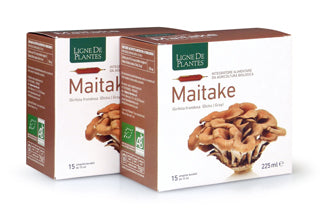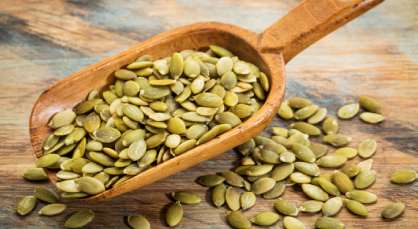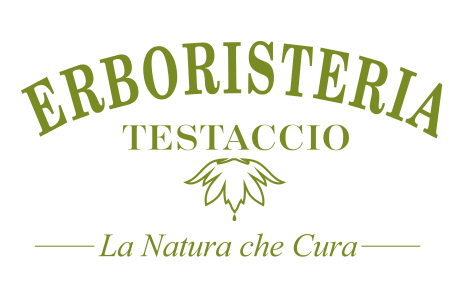Ligne De Plantes
Ligne De Plantes Maitake BIO 15 ampoules of 15 ml
Ligne De Plantes Maitake BIO 15 ampoules of 15 ml
Couldn't load pickup availability
Maitake (Grifola frondosa) is an edible mushroom and is considered a healthy food as it provides an excellent supply of proteins, carbohydrates and dietary fibre, vitamin D2 (ergocalciferol) and minerals (K, P, Na, Ca, Mg).( 1)
Aside from its high nutraceutical value, it has a wide range of pharmacological effects. One of the first researchers to analyze maitake was Dr. Nanba, who in 1988, by isolating Factor D, i.e. a complex of beta-glucans and proteins, demonstrated its anti-tumor properties. It has since been extensively studied and gradually developed into complementary medicines and healthcare products. (2.3)
In addition to fraction D, there are many other bioactive polysaccharide fractions that possess beneficial effects for the organism such as: immuno-modulation, anti-tumor, antiviral, anti-diabetic and anti-inflammatory.(4,5,6)
In recent years, a growing number of studies have attributed the therapeutic effects of polysaccharides to their ability to modify the intestinal microbiota, a set of microorganisms that play an important role in human health and disease by maintaining immune homeostasis. (7)
Regulation of the composition of the intestinal microbiota by Maitake polysaccharides contributes to the treatment of metabolic disorders such as non-alcoholic fatty liver disease (NAFLD) and diabetes, indicating their potential to prevent or treat hyperglycemia and hyperlipidemia (8,9). In addition to polysaccharides, other molecular fractions such as protein components, including glycoprotein, have also shown anti-tumor, immune-enhancing, anti-diabetic, anti-hypertensive, anti-hyperlipidemic and antiviral effects. (10,11)
Immunomodulation is the best known effect and has been confirmed by many studies demonstrating the ability of polysaccharides to enhance the actions of macrophages and many other immune-related cells, such as cytotoxic T cells and natural killer (NK) cells. (12). Furthermore, they increase the secretion of cytokines, including interferons (IFNs), interleukins (ILs), tumor necrosis factors (TNFs), and lymphokines with antiproliferative activity, causing apoptosis and differentiation in tumor cells.
Fraction D, in addition to its direct antitumor effect as mentioned above, is also an important polysaccharide fraction with immunomodulatory activity. Kodama and colleagues suggested that fraction D could activate NK cells by upregulating the expression of TNF-alpha and interferon-gamma proteins.
Meanwhile, fraction D was also able to increase macrophage-derived IL-12, which further activated NK cells, implying that fraction D could provide, long-term, tumor suppressive effects (13 ,14).
Further investigations conducted by the group led by Dr. Kodama highlighted that the application of fraction D reduces the effective dosage of the chemotherapeutic agent, mitomycin-C (MMC), increasing the proliferation, differentiation and activation of immunocompetent cells. It may also reduce the immunosuppressive activity caused by MMC (15).
In addition to fraction D, other polysaccharide fractions with immunomodulatory activity have also been isolated. The GFP fraction isolated from Meng promoted the production of cytokines and chemokines such as IL-6, IFN-gamma, and TNF-alpha, and also enhanced the proliferative activity of fibroblasts, contributing to strong immunostimulatory activity (16).
Numerous studies have been conducted reporting the beneficial effects of Maitake also in the treatment of viral infections, including those caused by the hepatitis B virus (HBV), enterovirus 71 (EV71), herpes simplex virus type 1 ( HSV-1) and human immunodeficiency virus (HIV). Mayell and colleagues reported a study of patients with chronic hepatitis B.
The results showed that patients who took Maitake polysaccharides had a higher recovery rate than the placebo control group.(17) Nanba et al. reported that the MD fraction is a valuable aid in the fight to fight HIV through several pathways, including direct inhibition of HIV, stimulation of the natural defense system against it, and a reduction in vulnerability to opportunistic infections ( 18).
Furthermore, it was discovered that the GFP1 fraction extracted from Zhao is effective in counteracting enterovirus EV71, the causative pathogen of foot-and-mouth disease. The researchers found that the active ingredients in Maitake could hinder viral replication by suppressing genomic RNA synthesis and protein expression.
In addition to the polysaccharide fractions, the GFAHP protein fraction also showed antiviral effects as it significantly inhibited HSV-1 replication in vitro and reduced HSV-1-induced symptoms such as blepharitis in a mouse model. (19.20)
In addition to the antiviral effect, fraction D also showed antibacterial effects. Kodama and colleagues found that the mechanism of antibacterial action was related to immunostimulatory activity.
Fraction D could activate immunocompetent cells and induce the production of cytokines, leading to the enhancement of splenic T cell activity to kill, for example, Listeria monocytogenes. Unlike the antibacterial mechanism, the antiviral action of fraction D is not directly related to the immune system. According to Gu et al., fraction D interfered with HBV replication through inhibition of its polymerase.(21,22)
The hypoglycemic mechanisms of the polysaccharide fractions of Maitake are linked to the activity of insulin. For example, F2 and F3 polysaccharides and SX glycoprotein moieties have been suggested to exert a hypoglycemic effect via the insulin signaling pathway.
The Dr. Konno reported that the SX fraction facilitates glucose absorption, leading to activation of the insulin receptor (IR) and insulin receptor substrate (IRS-1) resulting in increased insulin secretion.
In addition to this, the hypoglycemic effects of Maitake can be induced through the inhibition of alpha-glucosidase activity, since inhibiting this factor prevents the hydrolysis of starch into disaccharides resulting in a decrease in blood glucose levels.( 23.24)
Maitake also has excellent effects on lipid metabolism and the consequent blood pressure regulation. In a study conducted by researchers Kubo and Nanba it was highlighted that with Maitake treatment, in subjects subjected to an unbalanced diet, the levels of triglycerides, cholesterol and phospholipids in the serum were suppressed by 30-80% compared to those of the control group .
Furthermore, the corresponding faecal cholesterol excretion ratio increased 1.8-fold in the Maitake-treated group, further demonstrating that the treatment contributed to improving lipid metabolism by inhibiting the increase in hepatic and serum lipids after ingestion. of foods high in fat.(25)
Water - Concentrated Orange Juice - Concentrated Lemon Juice - 10/1 dry extract of Maitake fungal fruiting body* (Grifola frondosa (Dick.) Gray)
* Ingredient from organic farming.
|
SUBSTANCES WITH NUTRITIONAL OR PHYSIOLOGICAL EFFECT per daily dose (15 ml) |
|
|
Maitake fungal fruiting body dry extract 10:1 (Grifola frondosa (Dicks.) Gray) |
250 mg |
USE TIPS:
Take one ampoule per day diluted in half a glass of water.
Share


Our philosophy
None of our products contain petroleum derivatives, silicones or preservatives such as paba, formaldehyde releases or chlorine derivatives. No preparation is identical to another just as no flower is identical to another. Our products stand out for the production and processing of raw materials in an artisanal way while respecting nature.
Our advice
View all-

Dr. Raniero Iacobucci Protocol For Prostatic Hy...
Raniero iacobucciBenign prostatic hyperplasia (BPH) is a common condition that affects men aged 50 and over and is characterized by a noncancerous (benign) enlargement of the prostate that can make urination...
Dr. Raniero Iacobucci Protocol For Prostatic Hy...
Raniero iacobucciBenign prostatic hyperplasia (BPH) is a common condition that affects men aged 50 and over and is characterized by a noncancerous (benign) enlargement of the prostate that can make urination...
-

Liver purification – Cholagogic remedies
Raniero iacobucciThe importance of the liver in human pathophysiology is now an undisputed fact. The liver is the largest gland in the entire body and represents the center of the body's...
Liver purification – Cholagogic remedies
Raniero iacobucciThe importance of the liver in human pathophysiology is now an undisputed fact. The liver is the largest gland in the entire body and represents the center of the body's...
-

Pure Kalanchoe daigremontiana juice
Raniero iacobucciPure Kalanchoe daigremontiana juice From next week, pure juice will be available at the Herbalist's shop, obtained from the cold pressing of fresh Kalanchoe daigremontiana leaves. Does it contain preservatives? Since...
Pure Kalanchoe daigremontiana juice
Raniero iacobucciPure Kalanchoe daigremontiana juice From next week, pure juice will be available at the Herbalist's shop, obtained from the cold pressing of fresh Kalanchoe daigremontiana leaves. Does it contain preservatives? Since...




